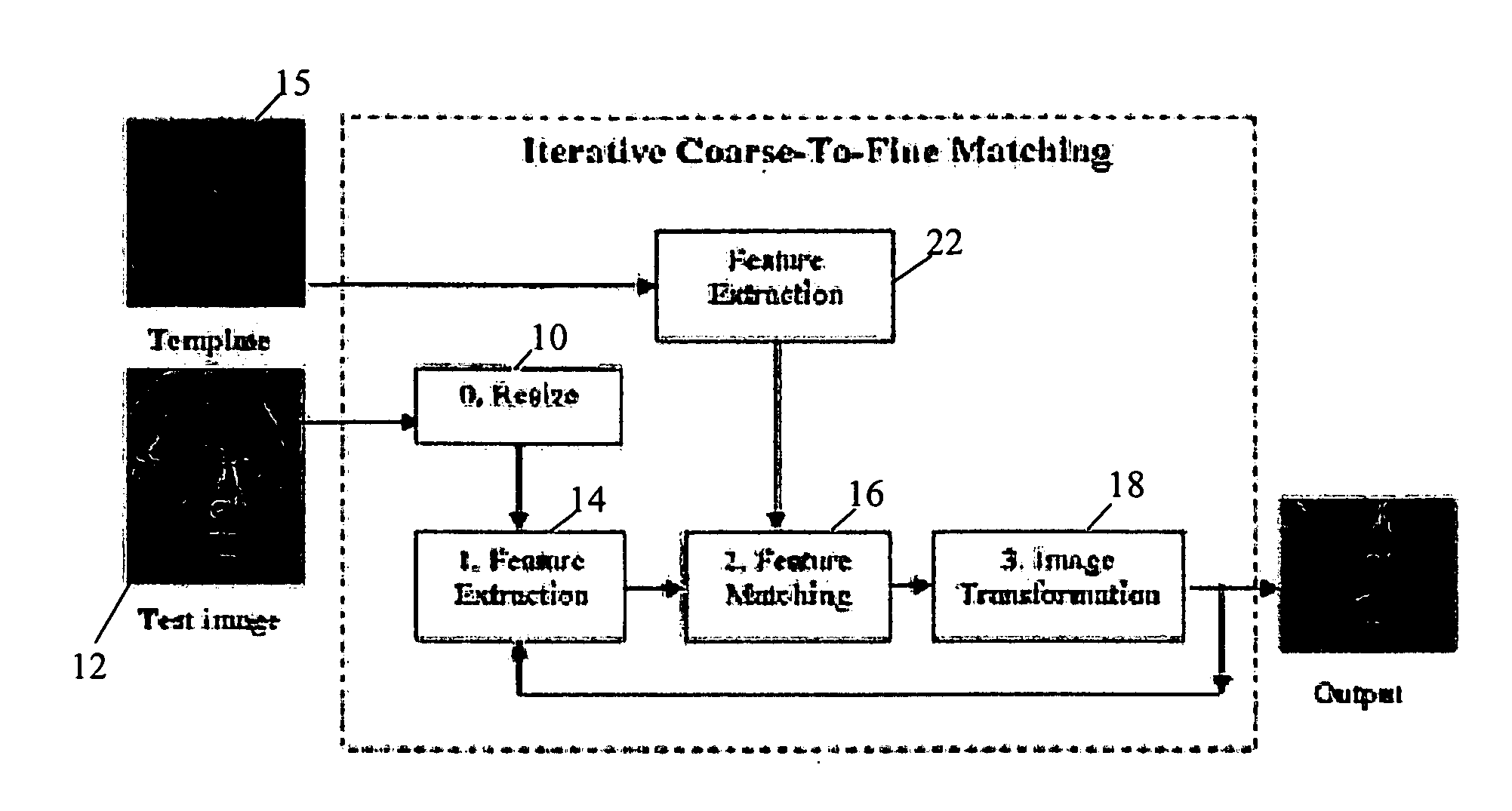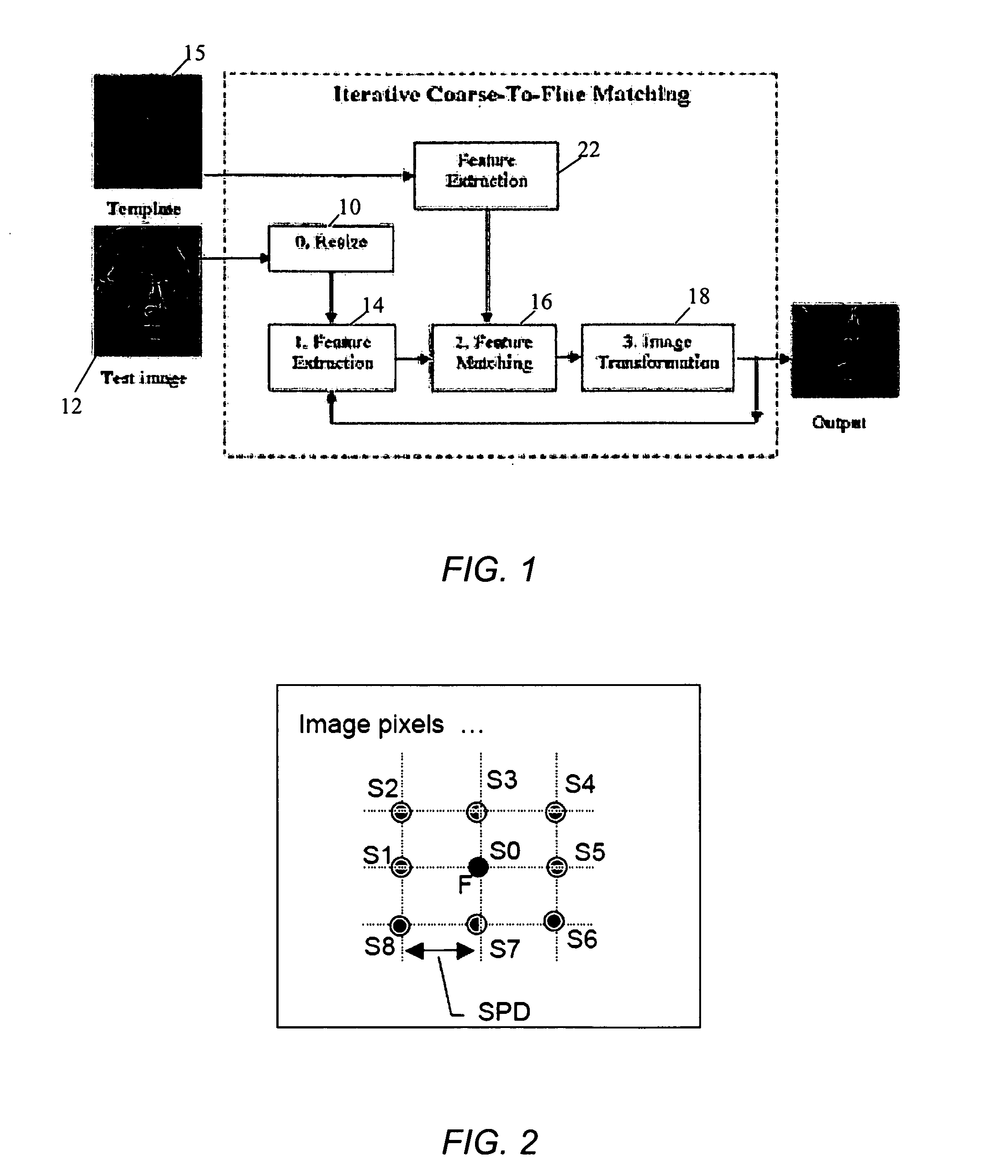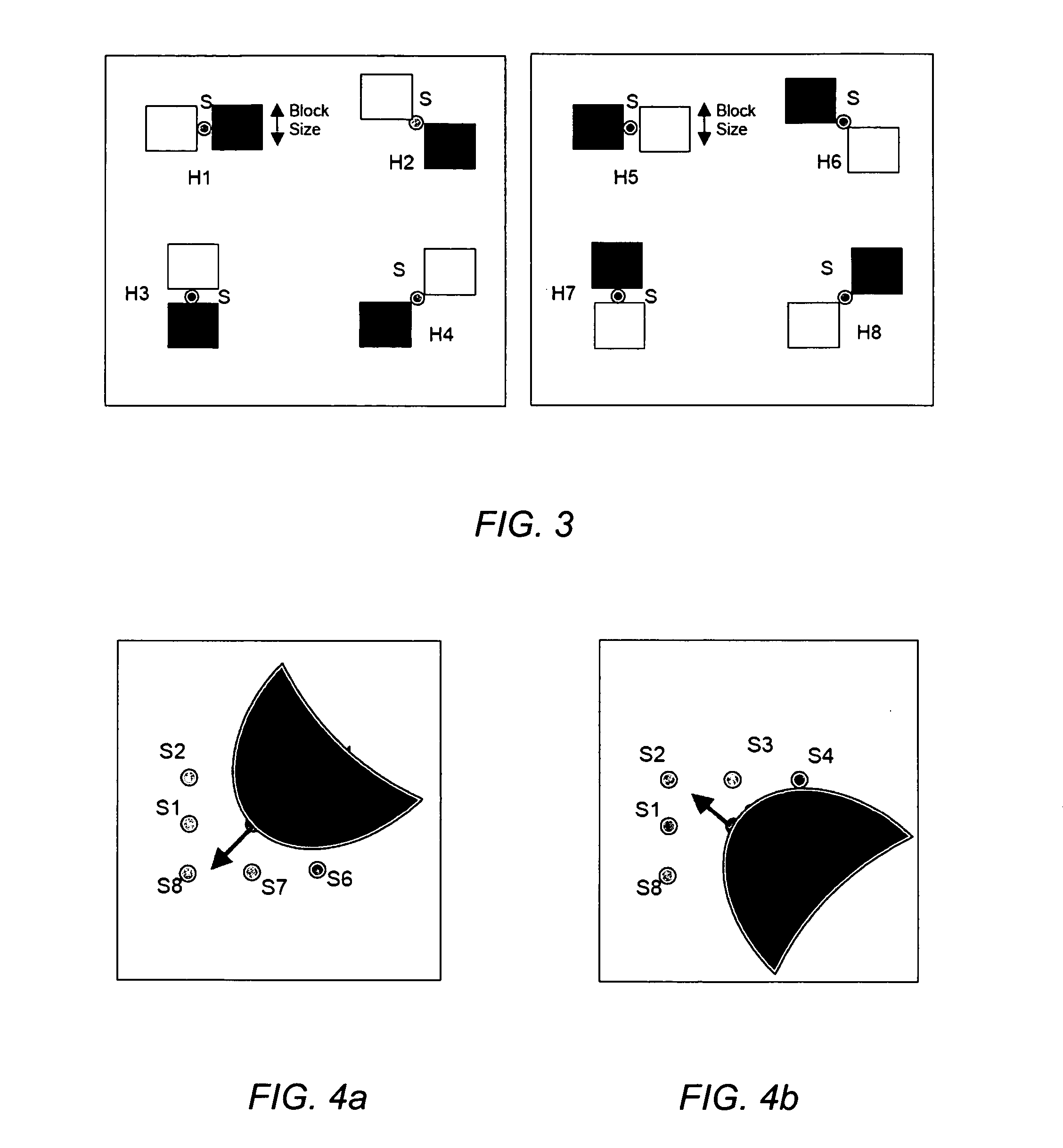Image recognition system and method using holistic Harr-like feature matching
a feature matching and image recognition technology, applied in the field of image recognition systems and methods, can solve the problems of requiring pattern recognition and learning expert knowledge and laborious training efforts for traditional image recognition techniques, requiring long training time, and requiring parameter adjustment and long training tim
- Summary
- Abstract
- Description
- Claims
- Application Information
AI Technical Summary
Benefits of technology
Problems solved by technology
Method used
Image
Examples
Embodiment Construction
[0029]FIG. 1 illustrates operations performed in a holistic Harr-like feature matching process in accordance with an exemplary embodiment. Additional, fewer, or different operations may be performed depending on the embodiment or implementation. In an operation 10, a test image 12 is resized. An operation 14 involves feature extraction in which invariant Harr-like features are extracted from key points, such as corners and edges. For images which are 100 by 100 pixels, 150 to 300 feature points can be extracted.
[0030] Feature extraction includes feature point detection and description. Not all image pixels are good features to match, and thus only a small set of feature points (e.g., between 100 and 300 for 100 by 100 images) are automatically detected and used for matching. Preferably, feature points are repeatable, distinctive and invariant.
[0031] Generally, high gradient edge points are in repeatable features, since they can be reliably detected under illumination changes. Neve...
PUM
 Login to View More
Login to View More Abstract
Description
Claims
Application Information
 Login to View More
Login to View More - R&D
- Intellectual Property
- Life Sciences
- Materials
- Tech Scout
- Unparalleled Data Quality
- Higher Quality Content
- 60% Fewer Hallucinations
Browse by: Latest US Patents, China's latest patents, Technical Efficacy Thesaurus, Application Domain, Technology Topic, Popular Technical Reports.
© 2025 PatSnap. All rights reserved.Legal|Privacy policy|Modern Slavery Act Transparency Statement|Sitemap|About US| Contact US: help@patsnap.com



